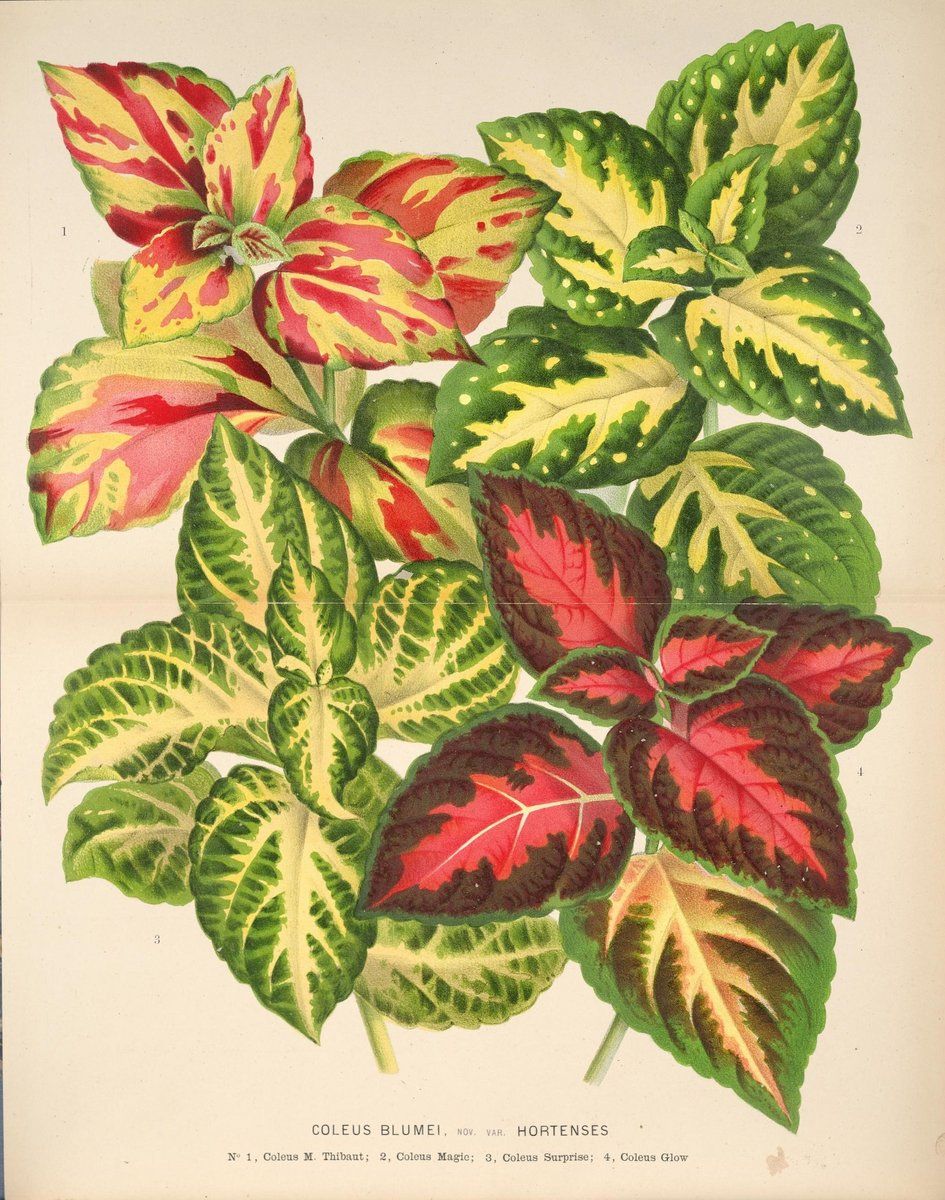Your cart is currently empty!
Coleus History

Coleus, originally known as Solenostemon scutellarioides, has a fascinating history that dates back to the 19th century. Native to tropical regions of Southeast Asia, India, Africa, and Australia, Coleus was first introduced to Europe in the mid-1800s by Dutch botanist Karl Ludwig Blume.

In the Victorian era, Coleus plants gained immense popularity due to their vibrant foliage and ease of care. They were commonly used in ornamental gardens and as indoor houseplants. Victorian gardeners experimented with breeding and hybridization, resulting in a wide variety of colorful cultivars.
The popularity of Coleus waned in the 20th century, but it has experienced a resurgence in recent years. Today, Coleus is celebrated for its striking foliage, low-maintenance nature, and versatility. It is a beloved plant among gardeners and plant enthusiasts worldwide.
To find specific records of Victorian-era Coleus plants, you might want to explore the following resources:
Botanical Gardens and Historical Societies:
- Royal Botanic Garden, Kew: This renowned institution has extensive historical records and plant collections.
- The New York Botanical Garden: This garden has a rich history and may have records of Victorian-era plant collections.
- Local Historical Societies: Check with local historical societies or museums in areas with strong gardening traditions. They may have old gardening books, photographs, or oral histories that mention Victorian-era Coleus.
Online Archives and Databases:
- JSTOR: This digital library provides access to academic journals, books, and primary sources. Search for articles on Victorian-era gardening or the history of specific plant species.
- Google Books: This platform allows you to search for digitized books, including old gardening manuals and botanical texts.
- Internet Archive: This digital library offers access to a vast collection of historical documents, including books, articles, and images.
Antique and Vintage Stores:
- Antique Stores: Check for old gardening books or botanical prints that may feature Victorian-era Coleus.
- Online Marketplaces: Websites like eBay and Etsy can be great sources for vintage botanical prints and gardening books.
Remember, as you delve into the historical records, you may encounter different botanical names for Coleus. The plant’s classification has changed over time, so be aware of synonyms and historical references.
By exploring these resources, you can uncover fascinating details about the history of Coleus and its role in Victorian-era gardening.
Coleus plants were a favorite among Victorian gardeners due to their vibrant foliage and versatility. They were primarily used in the following ways:
1. Carpet Bedding:
- Coleus plants were planted in intricate patterns to create stunning carpets of color in gardens.
- Different varieties were used to form intricate designs, borders, and geometric shapes.
- This technique was popular in formal gardens and public parks.
2. Indoor Plants:
- Coleus plants were often grown indoors as houseplants, adding a touch of color and life to Victorian homes.
- They were displayed in decorative pots and window boxes.
3. Edging and Borders:
- Coleus plants were used to create colorful borders around flower beds and walkways.
- They were also used to edge garden paths and create a sense of enclosure.
4. Container Gardening:
- Coleus plants were grown in pots and containers, adding a vibrant touch to balconies, patios, and porches.
- They were often combined with other flowering plants to create beautiful arrangements.
In addition to their aesthetic appeal, Coleus plants were also valued for their ease of care and ability to thrive in various conditions. They were popular among both amateur and professional gardeners, and their popularity continues to this day.
The decline in Coleus popularity during the 20th century can be attributed to a few factors:
- Changing Fashion Trends: Gardening trends shifted towards simpler, more naturalistic styles. The bold, vibrant colors of Coleus, which were popular in the Victorian era, became less fashionable.
- Rise of Modern Hybrids: The introduction of new, more uniform hybrid varieties of annual flowers, such as petunias and marigolds, overshadowed the popularity of Coleus. These new varieties were easier to grow from seed and offered a wider range of colors and forms.
- Focus on Low-Maintenance Plants: As people’s lifestyles became busier, there was a growing demand for low-maintenance plants. While Coleus is relatively easy to care for, it may not have been as popular as other, even lower-maintenance plants.
However, in recent years, Coleus has experienced a resurgence in popularity. This renewed interest can be attributed to several factors:
- Increased appreciation for unique foliage: Gardeners are now seeking out plants with interesting leaf shapes, colors, and textures. Coleus, with its diverse range of foliage, fits perfectly into this trend.
- Growing interest in container gardening: Coleus is an excellent choice for container gardening, as it can add a vibrant splash of color to patios, balconies, and indoor spaces.
- Increased availability of new cultivars: Breeders have developed many new and exciting Coleus cultivars, offering a wider range of colors, patterns, and leaf shapes.
- The rise of social media: Social media platforms like Instagram and Pinterest have helped to popularize Coleus, with many people sharing photos of their beautiful plants.
As a result of these factors, Coleus has become a popular choice for gardeners once again, adding a touch of tropical beauty to gardens and homes around the world.
